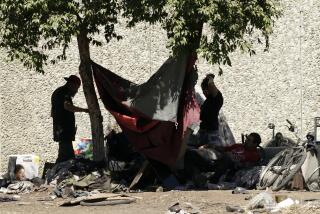Test of Census Sampling Method Heightens Debate
- Share via
SACRAMENTO — As the U.S. Supreme Court this week cast a new cloud over the use of sampling by the Census Bureau, results from a test of the controversial counting method here were giving its foes and fans even more to debate.
Census officials said that using the statistical method, they counted 403,313 residents in Sacramento during a dry run last spring. Without sampling, which is designed to cut census costs and avoid an undercount, they tallied 349,197 people.
As if those disparate numbers were not enough to cause a ruckus, there is a third population figure--calculated during the same period by state demographers. That estimate, which uses the city’s 1990 population and adjusts it upward according to growth in housing stock, said Sacramento is home to 393,264.
Which number is most accurate? That depends on whom you ask.
The Census Bureau stands by its sampling figure, declaring the Sacramento test count a success. “It went very well,” said Rajendra Singh, the bureau’s assistant division chief for statistical studies in Washington. “We learned a lot, so if we do use sampling in the [2000] census, we will be prepared.”
Congressional Republicans intend to ensure that day never comes. They have fought the Clinton administration’s plan to use sampling every step of the way, arguing that statistics can be manipulated for political purposes and that every person ought to be physically counted.
But supporters of sampling say that is no longer feasible in a nation as large, mobile and diverse as the United States. They say sampling can produce a far more accurate tally, avoiding the sort of undercount experienced in 1990, when 1.6% of the population--including about 834,000 Californians--was missed.
Such undercounts carry serious consequences for states, which receive federal funds based on population. If sampling were used, California could stand to gain as much as $1 billion in added federal funding over the next decade, state officials estimate.
“It would definitely raise the numbers here,” said Mary Heim, a state demographer. The 1990 undercount was especially high in California, she said, because the state has a high proportion of nonwhites, who are more likely to be missed.
Sampling has made the upcoming census the most controversial since George Washington ordered the first one in 1791. It involves directly counting 90% of households in a census tract and using that information to estimate the remaining 10%.
Although the Supreme Court’s decision barred the use of sampling to reapportion congressional seats, it left the door open for states to adjust census data for other purposes.
As a result, Democrats predicted that the administration would aim to produce two sets of census numbers in 2000--one a traditional head count, the other a figure based on sampling. But whether Republicans will approve money for the latter is an open question.
More to Read
Get the L.A. Times Politics newsletter
Deeply reported insights into legislation, politics and policy from Sacramento, Washington and beyond. In your inbox twice per week.
You may occasionally receive promotional content from the Los Angeles Times.







